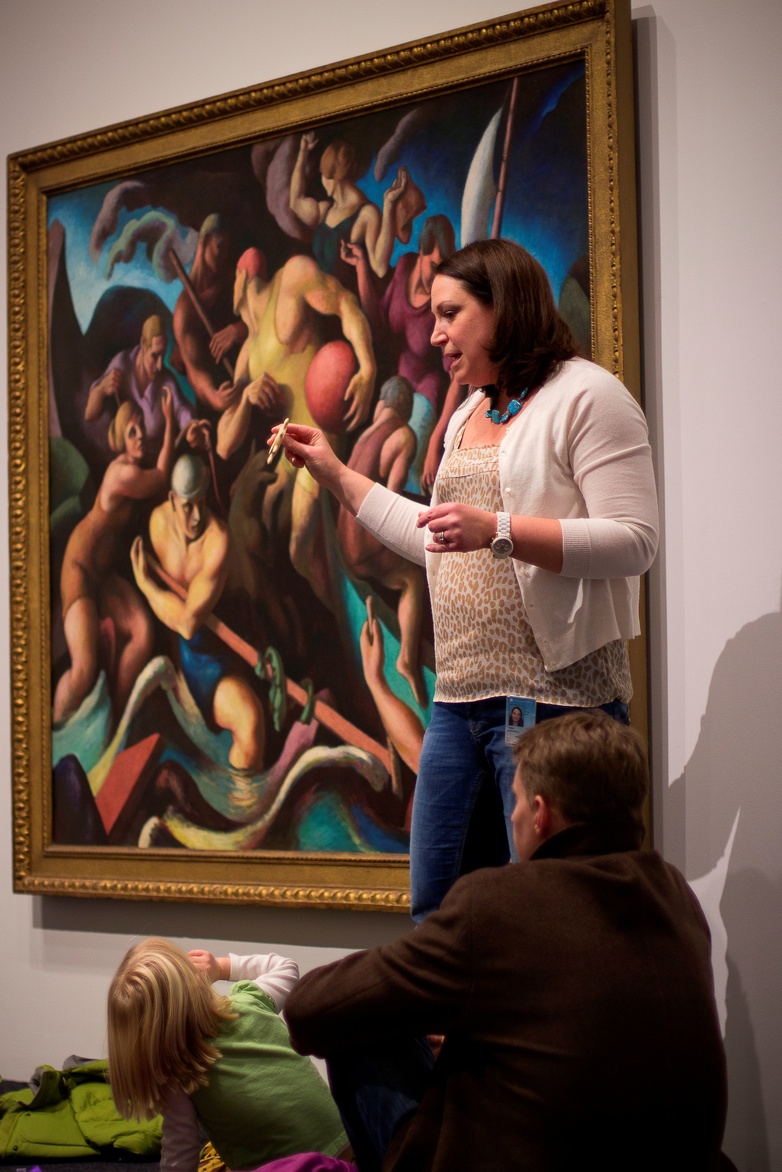Visiting Museums as a Family
We don't always think of museums and young children going hand-in-hand, but with the right framework and just a little bit of preparation, it can be an a great experience for the whole family. The Smithsonian Early Enrichment Center is sharing some of its best tips for successful family musueum visits.
The following is a guest post from the Smithsonian Early Enrichment Center (SEEC), a museum-based early childhood program for children aged 2 months - 6 years of age and offering workshops (http://www.si.edu/seec/community) for local families.

Today’s families embrace all that the DC metropolitan area has to offer. At any given time, there are festivals, classes and fun activities that cater to families. The Smithsonian, one of DC’s most encompassing (and completely free) resources, is no exception. Over the course of the last two decades, museums have begun to offer more programming for children and families. As the national spotlight has focused on the benefits of quality early childhood education, the Smithsonian is working hard to accommodate this audience in meaningful ways. The Smithsonian Early Enrichment Center or SEEC, as it is known, is nestled in the Smithsonian campus with locations at the National Museum of Natural History and the National Museum of American History. Since 1988, SEEC has been incorporating museums into their early childhood curriculum and we are working with other Smithsonian staff, educators and parents across the globe to encourage early learning in museums.
On any given day, you will find SEEC students sitting in a circle around an object at one of the Smithsonian museums or the National Gallery of Art. While some of you might visit museums with your preschoolers, we find that many parents struggle with how to make these visits fun, interesting and educational. SEEC wants parents to know that ALL museums can be places where young children can go to learn and not just to sightsee. Here are some tips for making the most out of your museum outing.

- Prepare your child for the visit. Talk about it, draw a picture, read a book (Babar’s Museum of Art).
- Have your child participate in the decision of what you are going to see and choose 1-3 objects, not a whole museum.
- Plan the time carefully. You DO NOT have to spend hours at the museum. We try to do 20-30 minute visits with most of our preschoolers. If you want to spend more time, give your child a break by playing out on the Mall, stopping for lunch/snack or bringing some sort of portable activity like a coloring book or card game.
- Kids will want to touch things so bring an object related to what you will see. It doesn’t have to be anything special, most often you can use common household items or toys. When that doesn’t work, a photo printed off the internet can help.
- Kids like singing and books, so don’t be afraid to sing Itsy Bitsy Spider at the insect zoo or read Eric Carle’s The Very Busy Spider.
- Ever heard of the phrase kinesthetic learning? Get your kids moving in the galleries by asking them do them to pose like Degas’ Little Dancer Aged Fourteen or walk like an elephant.
- Don’t fear electronics. Music and video can enhance an experience and Wi-Fi is available at most Smithsonian museums. Think about how much more meaning the ruby slippers would have if you showed a clip from The Wizard of Oz.
- Bring pencil and paper. With a few simple rules, your child can enjoy drawing what they see and even practice some of their early literacy skills.
- Use your imagination. The meaning of many objects is subjective, so why not make up your own story.
- Ask open-ended questions and encourage careful looking.
Let’s take a look at a recent visit to the Hirshhorn Museum and Sculpture Garden to see Thomas Hart Benton’s People of Chilmark. The class objective was to practice looking at and talking about art. This was the group’s third visit to a museum as a class, so they were comfortable putting on their “museum” bodies, especially after the brisk walk across the Mall. We sat criss-cross apple sauce on the floor and I asked them to describe the painting to me. I gave each child a chance to add something and I would build upon their answers but asking them to elaborate, i.e. “You said that they are in a boat – why do you think that?” or “Does everyone agree that he is wearing a bathing suit?” As the children talked I laid out objects pertaining to the painting on the floor. I brought in a small boat, a photo of a beach, a swim cap and a green scarf. As I brought each item out, we took turns passing it around the circle and commented on their physical qualities. We talked for about 15-20 minutes and when I noticed that some of the students were getting antsy, we transitioned into a sketching activity. Each child was asked to choose their favorite piece in a specific gallery and do their best job copying it. When we returned to our classroom, we painted our sketches and read from one of the Metropolitan Museum of Art’s Can Your Find It? series.
If we think of the museum as a place where can encourage open-ended conversation, hands-on exploration and observation, the possibilities for preschoolers are endless. We just have to prepare them and use the right strategies. Soon enough, they will feel like the museum is a second classroom!

